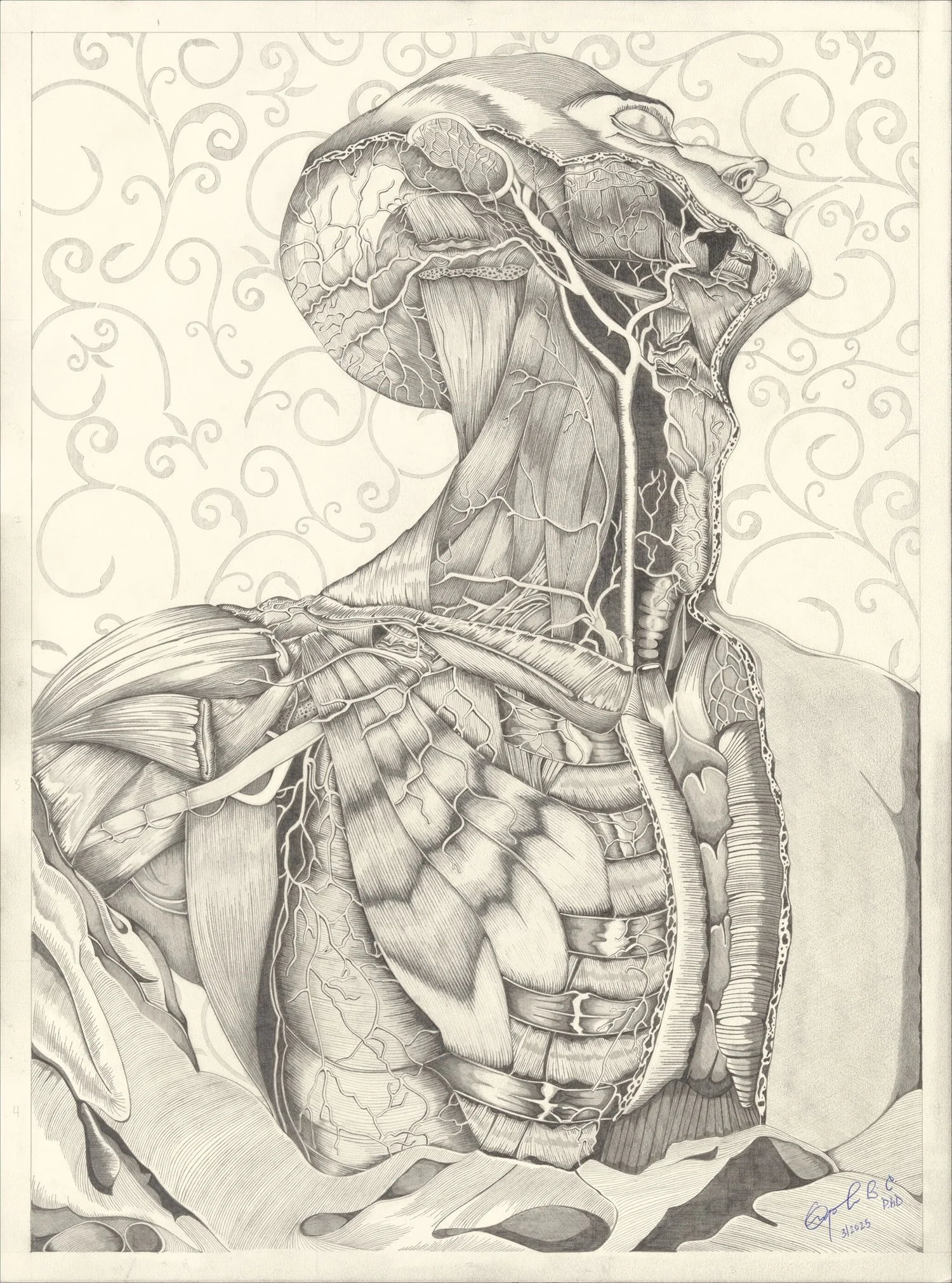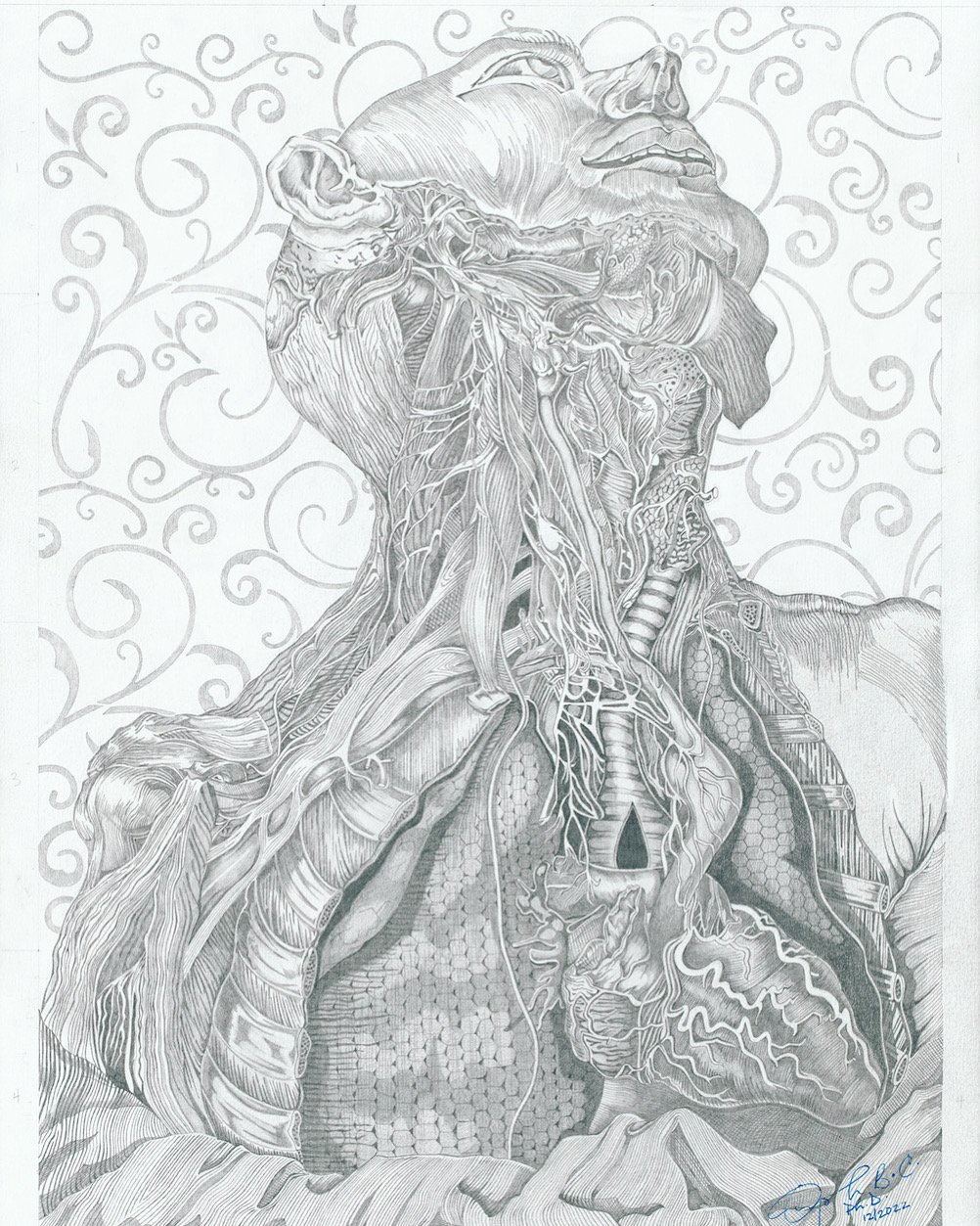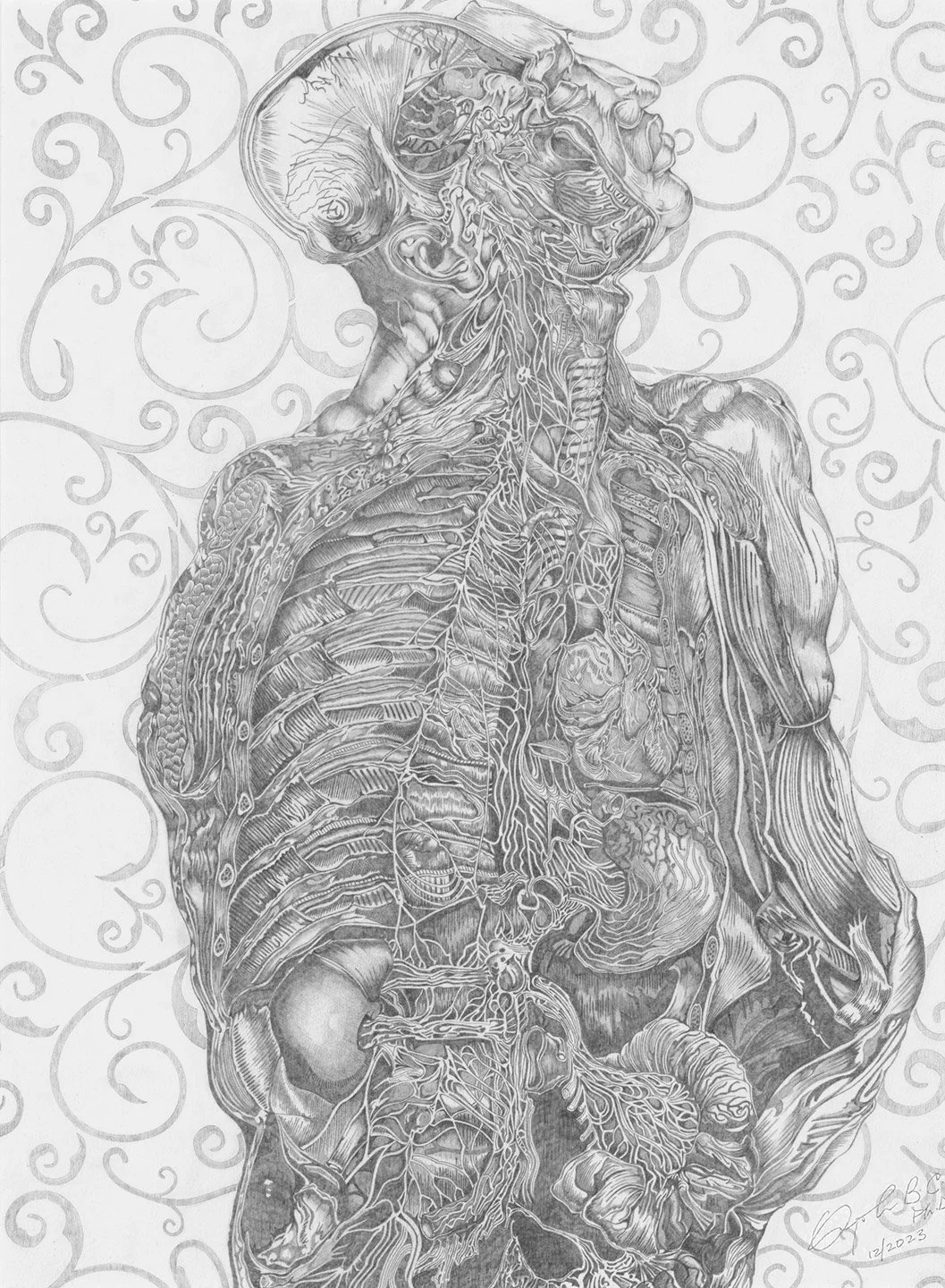ANATOMY
The glory of the fleshly bodies we inhabit as human spiritual beings is often lost on the majority of us. We end up being too caught up in the hustle and bustle of our everyday lives to realize just how maddeningly complex and stunningly beautiful the human organism we each carry around is. When my friends from the Bioengineering department at my Alma Mater reached out to commission some art pieces, carefully detailed anatomical renditions immediately came to mind. The intent was for these art pieces to serve as a constant reminder of the complexity and elegance of the solutions that were feverishly being worked on by the diligent men and women of this towering institution of intellectual excellence on a daily basis. While creating each of the pieces comissioned by Stanford, I found myself rapt in awe… absolutely fascinated by the beauty and engineering genius of the human body. I was hooked… obsessed… and decided to keep exploring the details of the human form until I run out of time.
Human Cadaver Study - Neck & cardiothoracic region of human male. Completed 2025 A.D.
human cadaver study - neck & cardiothoracic region of human male
medium - charcoal/pencil
size - 15” x 20”
status - available
A cadaver study of the neck and cardio thoracic region of a human male. The cadaver was partially dissected to reveal the delicate inter connectivity of the bones, muscular structures, blood vessels, and nerve endings.
Without Wax
Chuba Oyolu
Human Cadaver Study: Cranial Nerve X. Completed 2024 A.D.
HUMAN CADAVER STUDY - cranial nerve X
medium - charcoal/pencil
size - 15” x 20” on multimedia artboard
status - available
An in depth study of the trajectory and branches of the 10th cranial nerve (vagus nerve). Showing how its various branches connect with our visceral organs, with particular emphasis on the opened cross section of the lung.
Right lateral view in profile (thoracic and abdominal cavities opened)
Without Wax
Chuba Oyolu Ph.D.
Human Cadaver Study: Lungs & Abdominal Cavity. Completed 2023 A.D.
HUMAN CADAVER STUDY - lungs, abdominal cavity
MEDIUM: CHARCOAL/PENCIL
SIZE: 12”X16” ON MULTIMEDIA ART BOARD
STATUS: SOLD! (PALO ALTO, CALIFORNIA)
This piece is a detailed study of the human airway structure as well as the intrcate network of blood vessels that feed the abdominal cavity. I especially also like how the brain is exposed in this piece, hinting at its interconnectedness to all the organs below. The brain acts as sort of a “mission control” tower for all the organs in the body as you can see from all the nerves that run back and forth from the brain to the face muscles, and the soft tissue organs that are situated south of the brain. Again, I’m pretty sure that this level of complexity, beauty, and robustness of design could only have come from some sort of omniscient God. I consider myself a pretty smart man, but this is miles beyond my compreshension in all honesty.
If you are ever on Stanford’s campus in Palo Alto, you can actually go and see this art piece and the rest in the series at the Shriram Center for Bioengineering.
Without Wax
Chuba Oyolu Ph.D.
Human Cadaver Study: Upper Thoracic/throat region. Completed: 2022 A.D.
Human cadaver study - upper thoracic region
Medium: charcoal/pencil
size: 12”X16” on multimedia ART Board
status: SOLD! (PALO ALTO, CALIFORNIA)
This piece is a detailed study of the upper thoracic and throat region of the human body. The intricate details of the piece highlight the stunning interconnectedness of the muscular and skeletal systems, while also showing how both of those systems work to support and keep the vital organs of the body in place. Further, studying human cadavers to gain the knowledge required to create this piece as well as all the others in this series has bestowed in me the belief in some sort of God. I cannot for the life of me fathom how all of this masterful, maddening, yet functional complexity could somehow be explained by a theory of evolution due to random chance.
If you are ever on Stanford’s campus in Palo Alto, you can actually go and see this art piece and the rest in the series at the Shriram Center for Bioengineering.
Without Wax
Chuba Oyolu Ph.D.
Human Cadaver Study: Autonomous Nervous System. Completed 2024 A.D.
HUMAN CADAVER STUDY - autonomous nervous system
MEDIUM: CHARCOAL/PENCIL
SIZE: 12”X16” ON MULTIMEDIA ART BOARD
STATUS: SOLD! (PALO ALTO, CALIFORNIA)
This piece is a detailed study of the human airway structure as well as the intrcate network of blood vessels that feed the abdominal cavity. I especially also like how the brain is exposed in this piece, hinting at its interconnectedness to all the organs below. The brain acts as sort of a “mission control” tower for all the organs in the body as you can see from all the nerves that run back and forth from the brain to the face muscles, and the soft tissue organs that are situated south of the brain. Again, I’m pretty sure that this level of complexity, beauty, and robustness of design could only have come from some sort of omniscient God. I consider myself a pretty smart man, but this is miles beyond my compreshension in all honesty.
If you are ever on Stanford’s campus in Palo Alto, you can actually go and see this art piece and the rest in the series at the Shriram Center for Bioengineering.
Without Wax
Chuba Oyolu Ph.D.





